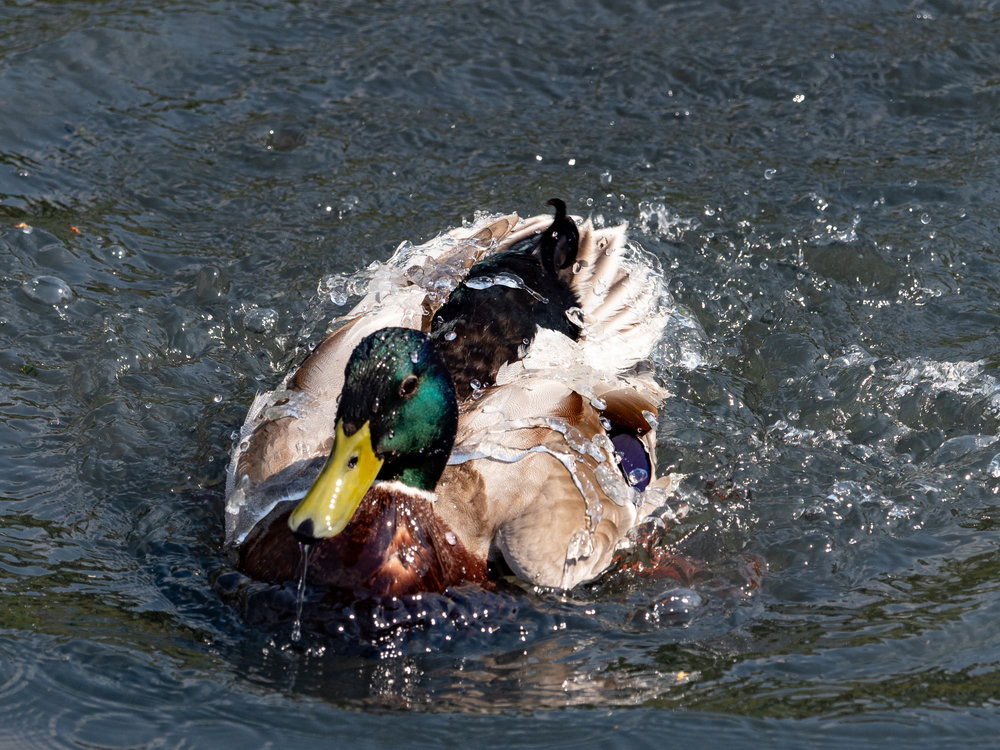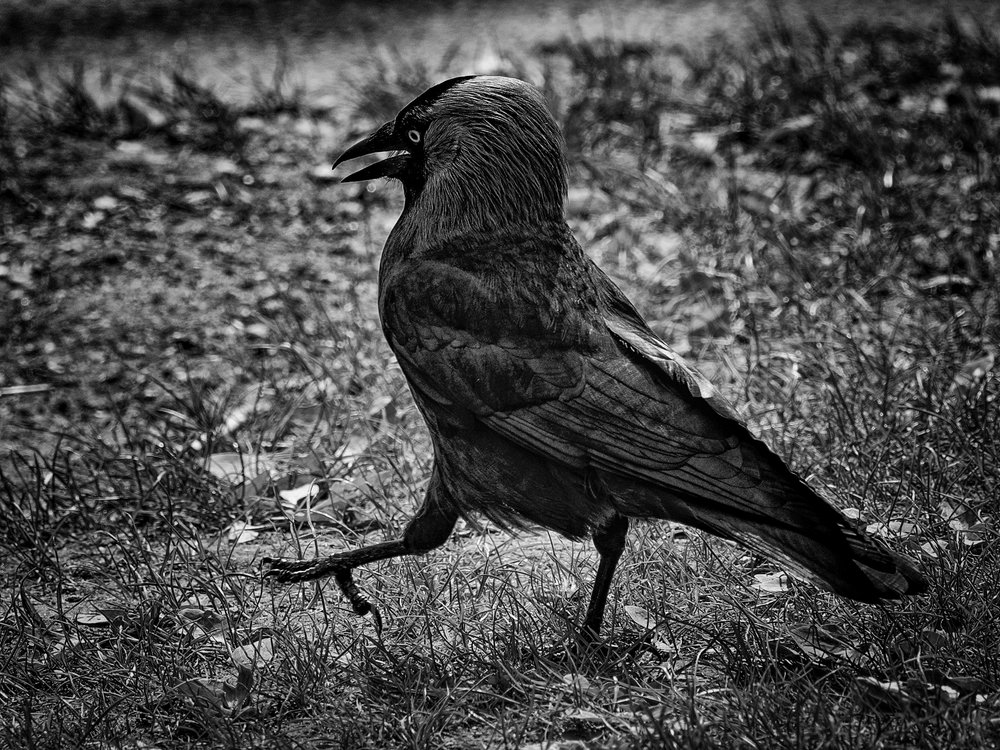
Thom Hogan, professional photographer, designer and author, is a respected voice in the photographic world. He has long been a presence in the micro four-thirds world and it was as a result of his early experiences with m4/3 in 2009 that he started his popular sansmirror.com blog. He knows a thing or two about mirrorless cameras so when he asked whether or not m4/3 is still a viable choice we sit up and take notice.
With smartphones and their ever-increasing performance nibbling away at the lunch of smaller sensor cameras, he wonders about the future of m4/3: “Living with m4/3 is a bit like seeing the storm on the horizon headed your way, and wondering if someone is going to come improve your house somehow so that the storm never gets there (or at least so that you can weather the storm)”.

While he is positive about m4/3 in the video area, he is now less sanguine about putting more time and energy into the format for use in still images. He points out he is not talking about the death of m4/3, just that it is becoming a niche format and one that is being squeezed from all sides; it is right in the eye of the storm. It does have many advantages, not least of which is the small size of telephoto lenses and a vast choice of lenses of all descriptions.
I would recommend you read Thom’s full article which you can find here. In his conclusion, he points out that we now have a lot of choices in mirrorless, and it is only going to get better. “Ultimately, the strongest choices will win out, and it won’t always be for technical reasons.”
What do you think? Will the market for m4/3 systems grow once more in the face of the above-and-below pressure? Already a majority of photographers are split into three camps, from full-frame, through APS-C to m4/3 — with 1in sensors coming in as a fourth option for tiny cameras and compact zooms. Will there be a reckoning for m4/3?
_____________
- Subscribe to Macfilos for free updates on articles as they are published
- Want to comment on this article but having problems?

All
I would have to say that I am not sure. I just posted comments to Mike’s article about switching from DSLRs to crop sensor camera, that I am considering moving back to full frame from M43. So, I will try to not repeat myself too much.
Concerning if M43 is still viable, I am not so sure. I recently placed my Olympus Pen-F alongside my M9 and Sony A7II, and the main body sizes of the three are very close. The viewfinder of the A7 makes it the largest and the M9 is the heaviest. So lenses are probably the deciding factor for what you want to do.
In terms of lenses, for me the reduced maximum focusing distance of equivalent M43 lenses, particularly in the normal to wide angle rage, is a factor making them less desirable. In general, if you can get close enough M43 lenses will make excellent images. Though, there are many times when I can’t get closer or doing so is undesirable. So a 24mm on full frame can be a better choice than 12mm on M43.
The differences in maximum focusing distance are less noticeable at longer focal lengths, or narrower equivalent fields of view. Though, when it comes to travel, landscape, and youth sports, the photographic envelope is smaller with M43 than full frame. And when I work outside that envelope the results can be disappointing.
PaulB
All very interesting thoughts everyone. I guess it really depends on the kind of photography you are into as well. If it’s just street, my pixel 2xl really puts micro 4/3 to shame or is at par. The portraits come out good too. However if you are into very wide angle or telephoto photography then the argument that micro 4/3 is good stands valid. I’ve recently sold my A7RIII because of shoulder problem and have got a used XT-1 to use with a couple of primes.i tried em10iii but didn’t see any benefit in dynamic range over pixel, for me. Interesting times but sometimes I find myself reading and perving on gadgets than actually taking photos!
Regarding M4/3 ‘f stop equivalence’ and John N stating that M4/3 300/4 is equivalent to FF 600/8 i.e. a loss of 2 stops: This not the case because there is no loss of light … just as there is no loss of light with APS-C 400/4 lenses compared to FF 600/4. The ‘loss’ is in depth of field whereby the equivalent DOF is greater by a factor of 2 for M4/3 or 1.5 for APS-C or 1.6 for Canon APS-C. When using a separate light meter and setting the aperture manually, we do not have to adjust the light meter readings for APS-C or M4/3 or 1" sensors … the light sensitivity ‘physics’ is the same for all formats.
I know about the depth of field issue and don’t see that as a great problem. One can always use a wider lens. But I am fairly convinced Thom Hogan is right on the light issue (see one of his supplementary comments). I need to investigate this further.
If you read Thom Hogan’s comment on the subject, the two stop difference comes from the m43 sensor being about half the size of full frame. Both in terms of overall sensor size and pixel size. Since light falls off with the square of the distance, a smaller sensor receives proportionately less light from the lens.
PaulB
I just switched to M4/3 after careful analysis and it was the Panasonic G9 that finally checked off all needs on the camera body front. It has superb ergonomics-the built-in grip is perfect for me and saved me having to add one on like the A7 cameras did. A system camera body can get too small independent of sensor size. The big factor for me was the glass for M4/3 is a lot smaller and there is an amazing range of pro glass available. On the APC camera front, the glass got bigger and the glass range was limited for the cameras I was interested in. I feel that APC is in more danger than M4/3. The Panasonic G9 and the following glass have been amazing: Pana Leica 200 2.8 and it’s 1.4x converter, Oly 75 1.8, Oly 45 1.2. I have found the following glass to be superb: Pana Leica 12-60 (glued to one G9), Oly 40-150 2.8, Pana Leica 12 1.4, Oly 25 1.2, Oly 7-14 2.8, Oly 8 1.8 fisheye, Pana Leica 15 1.7. All of the above glass exceeds my high expectations and provides me options from a relatively small street carry most of the time camera to 800 mm with the 200 and 2x converter which is great stopped down 1 stop. If this was APC or FF, I would have to carry a more extreme subset of this system. The only thing missing for me is more bits per pixel but that has not been a problem so far and will come. I almost did not buy because of the bits per pixel but I am delighted that I took the plunge. My Leica SL is going to eBay soon as I get time – it’s images were pure pleasure on my monitor but did not show up in 17×22 prints and the weight took the joy out of photography although it would be nice to keep on the shelf to admire its sheer beauty. It is the first camera that had everybody asking what it was in pubs and whether they could touch it. Even the Leica M got far less notice. But back to M4/3, it is a real camera versus the limited shooting envelope of a smart phone so I am not concerned. With the increased investment in pro grade glass by Oly and Panasonic, I think they see real revenue and APC is the poor step child of APC.
You make an interesting point that APS-C could be in more danger than m4/3 and I think this is quite a good possibility. I have been impressed by the Sony A7III and it is no heavier than a comparative Fuji X model — or, for that matter, than the G9. Nikon is rumoured to have an A7 competitor on the stocks, thus further supporting the move to full frame. Of course, it’s the lens systems that govern overall acceptance and this is where m4/3 has such a massive advantage. The difference between APS-C and FF lenses is not so dramatic.
I found that there was not a lot of difference between APC glass and Full Frame when I was needing to downsize due to neck and shoulder injury. Also, there were not a lot of great glass options in APC compared to FF (my poor step child comment). I found that Mirrorless FF had matured and had a vast range of glass options plus adapting and M4/3 had come of age sensor wise and had a vast range of adapted glass possibilities due to sensor being in the central sweet area of the glass and not having ray angle issues that FF has. The glass is compact compared to FF and even APC. So again, I feel that APC is the more likely endangered species. Take a look at Sony APC investment. There is always going to be a marketing and vanity factor to full frame. However for a more practical and compact alternative M4/3 is steaming full speed ahead. The serious market will always be there for pros and enthusiasts and I think, other than Fuji, there is not a serious APC vendor. Fuji could maintain their niche or expand into a different sensor. But my bets are the major players will be in mirrorless ff and M4/3 in the long term. Also, model role out will slow down on cameras due to decreasing sales.
Very interesting, but I don’t understand your last sentence. How can APC be the poor stepchild of APC?!
sorry I meant to say that APC is the poor step child of FF!
Mike it is very good to have your reference to this article by Thom Hogan – not least in the light of some of your own recent interesting and enthuiastic comments on m4/3. For me, the really salient sentence was "The usual point of reference here is the Olympus 300mm f/4 (as compared to the Canikon 600mm f/4). True, a 300mm lens is smaller and lighter than a 600mm lens. But we’re also giving up two stops of equivalence with m4/3, so we’d really be comparing to full frame 600mm f/8." It is the f4 = f8 point that is very often overlooked in comparing focal length equivalents, and it is clearly crucial – especially in poorer light.
The two lenses let the same amount of light through – the difference is the amount of depth of field.